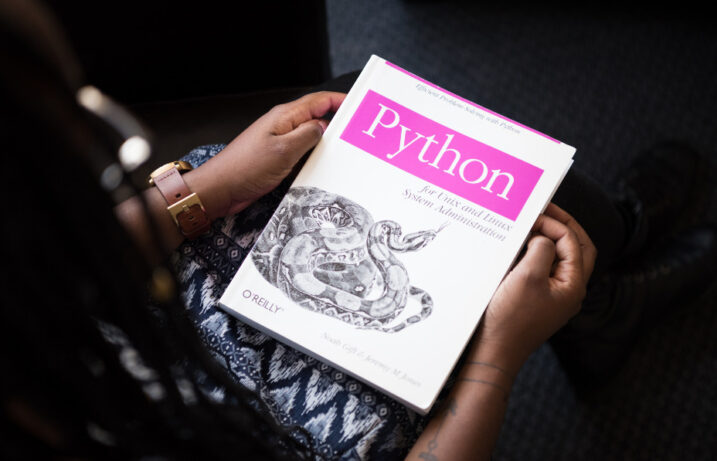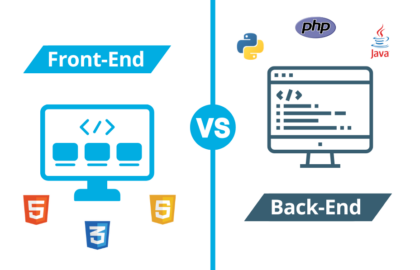Python is one of the most popular programming languages in software development. A general-purpose programming language, Python is an interpreted, object-oriented, and high-level programming language with dynamic semantics.
Since its creation in the early 1990s, it’s been used to build websites and software, automate tasks, and conduct data analysis by an estimated 8.2 million users.
Despite its current global popularity, Python came from humble beginnings and grew over time into the must-have language in developers’ toolkits.
Python’s Origin Story
Python was created by Guido Van Rossum, a dutch programmer, and released on February 20, 1991. Van Rossum created Python to be a general-purpose tool that could be applied to anything, and to reduce the complexity of coding syntax.
Did You Know: Python was named after an old BBC television comedy sketch series called Monty Python’s Flying Circus.
After releasing the program, Van Rossum further outlined his vision for Python:
- To be an easy and intuitive language that is just as powerful as those of the major competitors
- The ability for anyone to contribute to its development by being open source
- For the language to be easily understandable as plain English
- That the language be suitable for everyday tasks and allow for short development times
Python’s rise in popularity ever since is a testament to the fact that Van Rossum succeeded in creating an intuitive, accessible, and versatile language.
Python Popularity Over The Years
When Python was released in 1991, the premier languages at the time were FORTRAN, COBOL, C, and C++. Since the mid-90s, it has steadily been increasing in popularity and overtaking its old competitors.
Stack Overflow’s developer survey results from 2021 had Python as the 4th most popular language according to professional developers. According to TIOBE Index, as of October 2022, Python overtook Java and C as the most popular language.

Learner rates have also skyrocketed, with Python tutorials being the most popular language searched for on Google, according to the PYPL index (Popularity of Programming Language Index), overtaking Java in 2018.

Why Is Python So Popular?
So, why is Python so popular? What does it have that has made it such a runaway success when there are other programming languages available?
Beginner-Friendly
Python was designed to be easy to understand and intuitive. It was created with the intention of people reading code as they do plain English, so it is excellent for beginners and there is a smaller learning curve.
For example, Python learners encounter one of the first exercises: “Hello World.”
Learners simply input the plain English code of print(‘Hello World’), telling the computer to write out (a.k.a. print) ‘Hello World’ on the screen.
Using plain English as the code’s vocabulary helps users better understand what direction they are giving to the computer, and from there increases complexity.
Versatility of Use
Python was designed as a general-purpose language and can be used to create a variety of different programs. It is frequently used to build websites and software, automate tasks, and conduct data analysis.
Active and Supportive Community
Python is an open-source language, meaning that anyone can contribute to the code. Over time this lack of barriers to entry has resulted in an active and supportive community that wants to see Python thrive as a programming language.
Python is maintained by the Python Software Foundation.
Libraries and Frameworks
There are several frameworks and libraries for different specializations that make using Python a lot easier.
The two main frameworks for web development are:
Flask
Flask is a web framework used to develop webpages. It is considered more Pythonic than the Django web framework – another commonly used option – because in common situations the equivalent Flask web application is more explicit.
This gives control to the developer to create more explicit code to build applications.
Django
Django is a web framework that is easy to use, with a plug-and-play approach to developing applications.
Automation Made Easy
Python can automate tedious tasks such as updating and formatting data in Excel spreadsheets of any size, delivering reminder emails, and sending text notifications.
It is also the backbone of chatbots, which are found on just about every website these days. Chatbots use Natural Language Processing libraries like NLTK and spaCy based on Python that take in hundreds of thousands of sentences and then create new sentences as a response to questions.
Python Works with the IoT
IoT, or the Internet of Things, is a network of physical things embedded with software, sensors, and technologies that connect to other devices – think smart appliances and wearable devices.
Developing IoT devices is often data-intensive, making Python the natural programming language of choice.
Python can be used for programming IoT devices and developing the corresponding backend. What’s more, IoT paired with Python is an effective tool for prototyping, development, and the operation of various IoT devices and systems.
Efficient and Reliable
Because Python is so user-friendly and versatile, developers of almost any level can create powerful applications with minimal effort. With a little bit of skill and creativity, Python can be used to solve a myriad of problems.
Big Companies Use Python and Flask
There are several large and well-known companies that use Python and Flask as their web development language and framework.
These include Samsung worth over $343.35 billion as of January 2023, Netflix, and Uber, just to name the top three. For young developers dreaming of working at tech giants like these, Python is a great place to start.
Which Companies Use Python and Flask
According to Stack Share, there are 1,144 reported companies that use Flask in their tech stacks. This includes big-name brands like Netflix, Lyft, Patreon, and Reddit.

So Why Does Python Popularity Matter?
The rise of Python proves that popularity matters in terms of the amount of documentation, communities, and support for the language. With such a strong community with almost endless tutorials and “how-to’s” made readily available to anyone with an interest and an internet connection, getting started with Python and couldn’t be easier.
Learning Python will set you on a journey into programming, with active communities to support you and employment opportunities at the biggest tech companies.
If you dream of joining the ranks of other software developers working at places like Samsung, Reddit, and Lyft, why not get started learning Python today?
Apply Today to Flatiron School’s Software Engineering program to learn the skills you need to break into the industry in as little as 15 weeks.
Sources:
- https://stackshare.io/flask
- https://www.python.org/community/
- https://www.python.org/psf-landing/
- https://leftronic.com/blog/python-statistics/
- https://insights.stackoverflow.com/survey/2021#most-popular-technologies-language-prof
- https://www.tiobe.com/tiobe-index/




